

NEWS & UPDATES
Baleh Hydroelectric Project
Key Milestone: Completion of Diversion Tunnels and River Diversion
BALEH
12 JULY 2020
Sarawak Energy’s 1,285MW Baleh Hydroelectric Project (HEP) is on track to meet major milestones, despite the challenges of managing the limitations of the Movement Contol Order (MCO) while keeping the site team safe from the COVID-19 infection. This includes scheduled completion of the diversion tunnels by the end of August, 2020.
Recently, Datuk Amar Abdul Hamed Sepawi, Sarawak Energy Chairman and Datu Haji Sharbini Suhaili, Sarawak Energy Group Chief Executive Officer led a work visit to experience first hand the site progress accompanied by Ir. Pramod Kumar Karunakaran, Executive Vice President and Ir. Tan Hang Kiak, Baleh HEP’s Project Director.
They were also there to receive Sarawak Chief Minister Datuk Patinggi Abang Haji Abdul Rahman Zohari Tun Datuk Abang Haji Openg’s work visit to Baleh HEP the following day. Accompanying the Chief Minister were Tan Sri Datuk Amar James Jemut Masing, Deputy Chief Minister Of Sarawak; Dato Sri Dr Stephen Rundi Utom, Sarawak Minister For Utilities; Datuk Liwan Lagang, Assistant Minister For Utilities (Rural Electricity) and Datuk Amar Jaul Samion, Sarawak State Secretary among others.
Sarawak Energy’s largest hydropower project to date, Baleh HEP is a key state infrastructure and hydro-industrialisation development project planned as part of the Sarawak Corridor of Renewable Energy (SCORE) to ensure sufficient energy capacity for Sarawak’s future growth and development. The project supports the State’s ambition of achieving high income status by 2030.
Commenting on project’s progress after site inspection, Datu Haji Sharbini said, “We are grateful to the State Disaster Management Committee for allowing us to continue to work during MCO with stringent COVID-19 Standard Operating Procedures (SOP) in place. The completion of the Diversion Tunnels is critical towards meeting overall Baleh HEP project completion by 2026.”
“In working to meet our targets, safety is our number one priority. All employees, contractors and their workers must comply with our life saving rules in addition to the COVID-19 SOP. Any incidents of non-compliance will not be tolerated as there are serious repercussions in a contained project environment such as our Baleh HEP site,” he emphasised.
The project currently has about 700 people on site and is expected to peak at 3,500 overall, with highly skilled Sarawakian and foreign workers. Efforts will continue to maximise local employment through training of workers for the various skill sets required for the project.
“The river diversion activity is scheduled for completion by October this year with overall current progress at 66%. The construction of upstream and downstream coffer dams to enable the diversion of the river will start by September this year. Thereafter, the main activity of building up the dam can proceed,” Ir. Pramod explained.
The project comprises six work packages: the construction of jettys, roads and bridges; storage for explosive magazines used for rock blasting; the operator’s village which will house the power plant’s staff; diversion tunnels for diversion of the river to enable construction of the main dam; main civil works and main electrical and mechanical works.
The work visit included a drive-through the overall project site and one of the two diversion tunnels. The dual diversion tunnels run parallel to each other over a length of 1.2KM. Once the tunnels are completed, diversion of Baleh river will begin to enable safe construction works on the main dam.
Local community briefings have begun to keep them informed of the river’s diversion and to gather their feedback and concerns. While the project does not involve the relocation of any villages or settlements, community concerns regarding its impact are monitored through engagement sessions and interactions that started in 2015. In addition, social investments programmes with local communities have been developed and implemented, including training local youth to ensure a pipeline of local resources, the provision of scholarships as well as conducting entrepreunerial development programmes.
“Through a structured Grievance Mechanism System being put in place, we will be listening to and addressing the concerns of the project-affected local communities in consultation with the State Government and the relevant agencies. This will ensure that we meticulously capture all grievances as per the project’s good practices concerning social impact.The local communities are a vital stakeholder in Baleh HEP and we will endeavour to ensure the concerns of the communities and all stakeholders are captured and addressed in a timely manner,” Ir. Pramod said.
The mechanism will record grievances concerning Baleh HEP including associated transmission power lines and substations. Efforts are ongoing to ensure all stakeholders are well informed on the availability of the Grievance Mechanism.
Sarawak Energy’s Project Delivery Team is working with Sarawak’s Ministry of Utilities and agencies including Kapit’s Resident Office, Bukit Mambong District Office, Land & Survey, Sarawak Natural Resources and Environment Board and Sarawak Rivers Boards among others to ensure the affected community is sufficiently engaged.
Baleh HEP is Concrete Faced Rockfill Dam with an elevation of 225m above sea level. It is located on the Baleh River, about 105km upstream from its confluence with the Rejang River in Kapit.
The conservation and protection of biodiversity in the Baleh catchment area is also vital to ensure the sustainability of a catchment area ecosystem.
As part of these efforts, Sarawak Energy and Sarawak Forest Department inked a Memorandum of Understanding (MoU) in June 2019 to collaborate on the Baleh Watershed Wildlife Connectivity Project for research and data gathering in the effort to conserve and protect the catchment area and its ecosystem. This three-year project is part of Sarawak Energy’s integrated catchment management initiative to support biodiversity conservation as well as build resilient hydropower resources through protection of catchment areas and water resources.
The collaboration effort also assisted the development of a long-term monitoring plan for wildlife conservation within the proposed reservoir as part of the preparation for Wildlife Monitoring and Rescue (WiMOR) of the project. It will also look into long-term risk management to ensure the upstream water resources are protected for the sustainable operation of the future Baleh HEP.
Other sustainability initiaves include the Baleh Watershed Connectivity Project, a continuation of the Heart of Borneo (HoB) scientific expedition in 2015, following which 66,721 ha of the surveyed area was officially gazetted as Baleh National Park within the Baleh HEP Catchment Area.
Including Baleh when completed, Sarawak will have four large hydroelectric plants to boost renewable hydropower generation and energy security for Sarawak including the 2,400MW Bakun HEP which was acquired from Federal Government in 2017.
All of Sarawak Energy’s hydropower dams are designed and constructed following stringent guidelines set by the International Commission on Large Dams (ICOLD) to withstand extreme flood events and is also in accordance with guidelines set out by the Hydropower Sustainability Assessment Protocol of the International Hydropower Association.
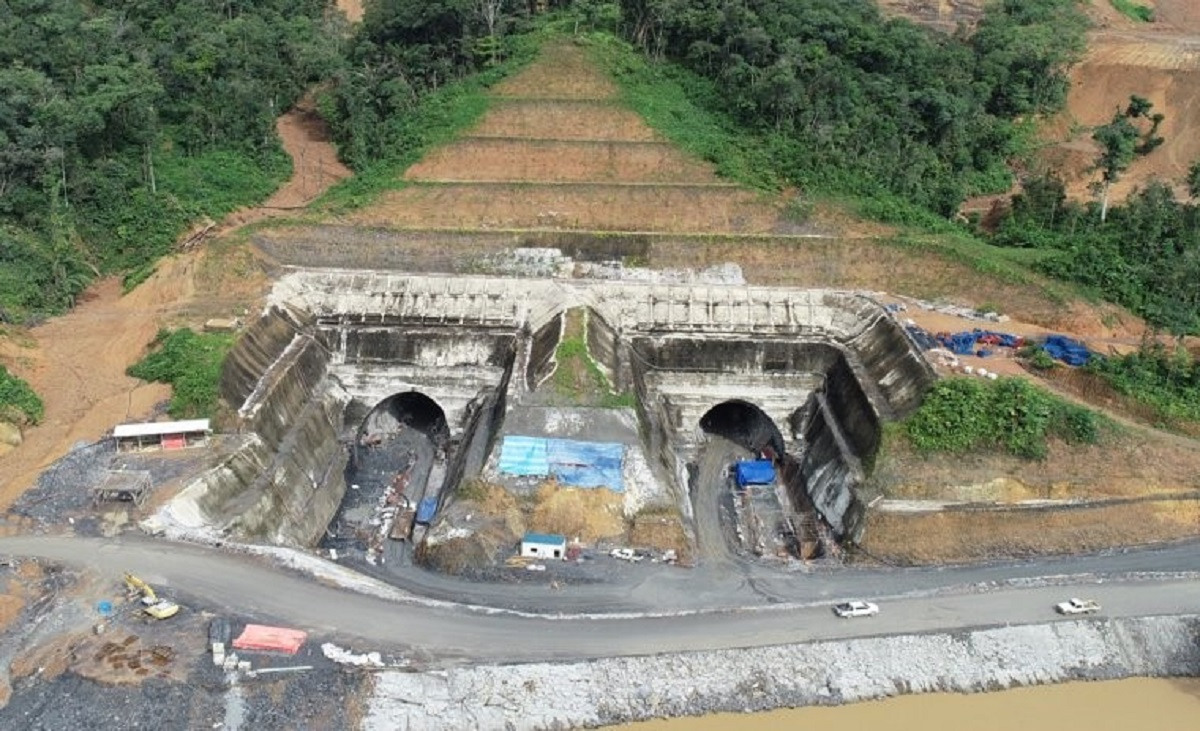

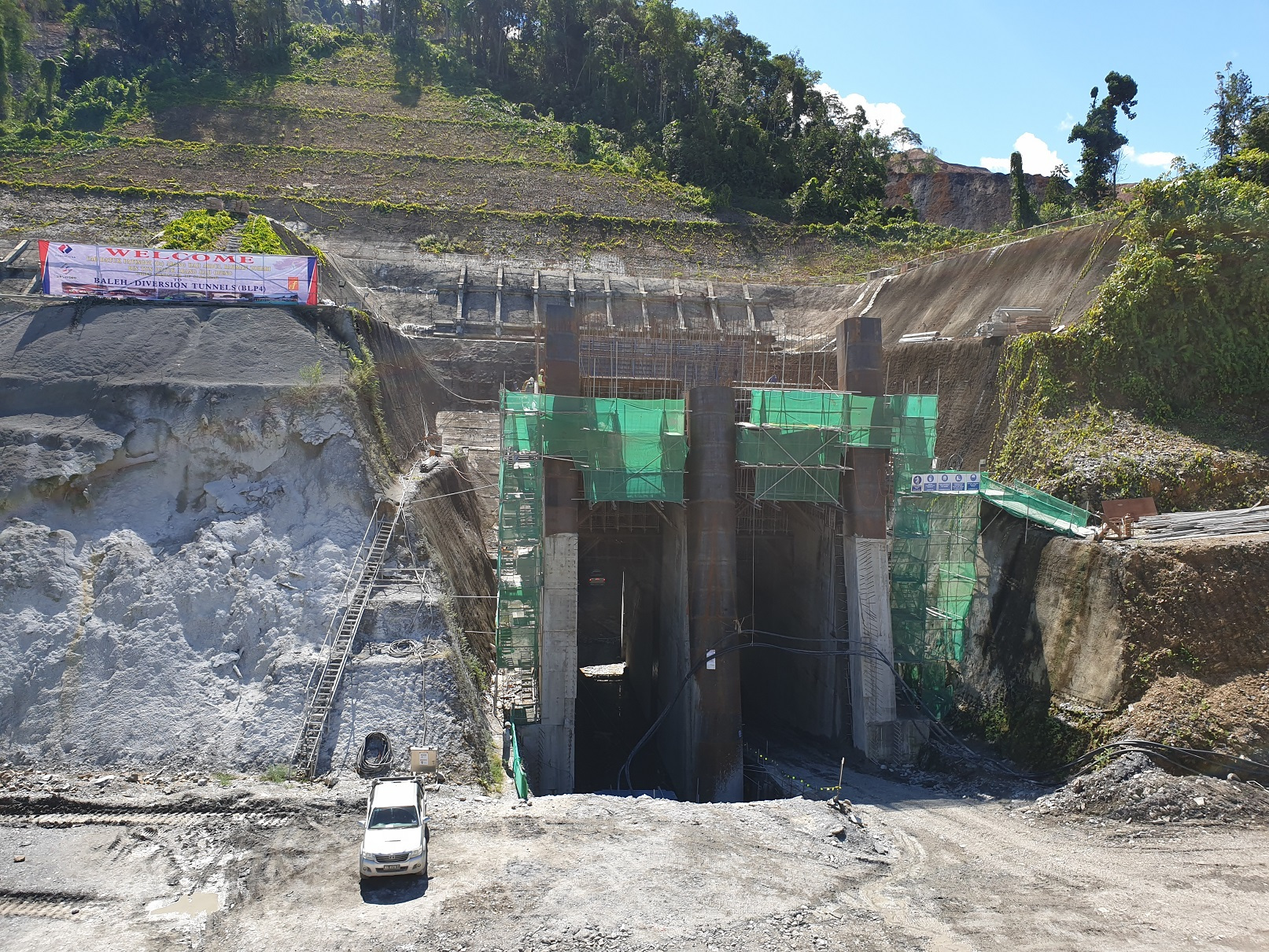

Baleh HEP’s diversion tunnels.
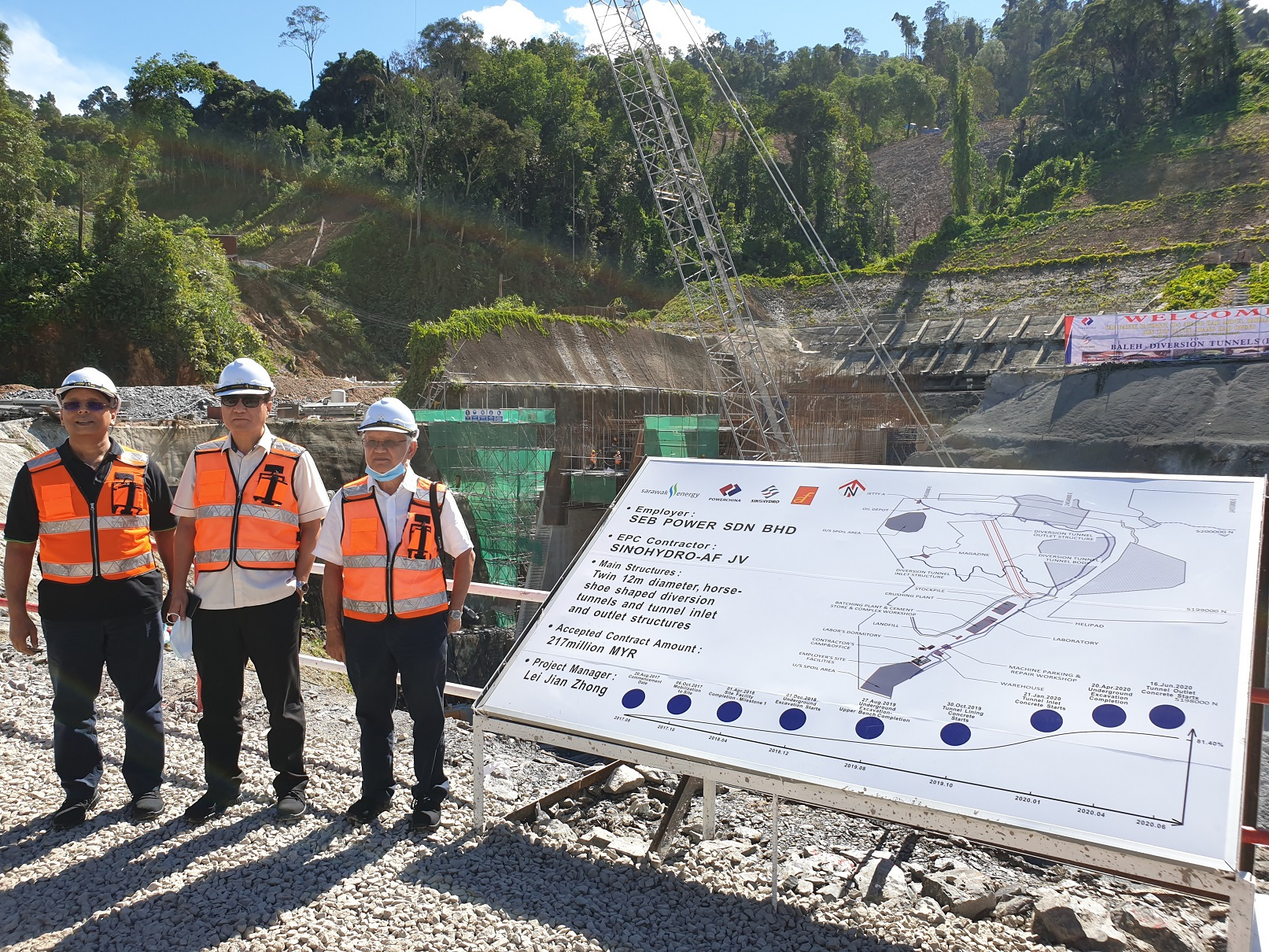

From left; Ir. Pramod, Datu Haji Sharbini and Datuk Amar Abdul Hamed at the diversion tunnels construction site.
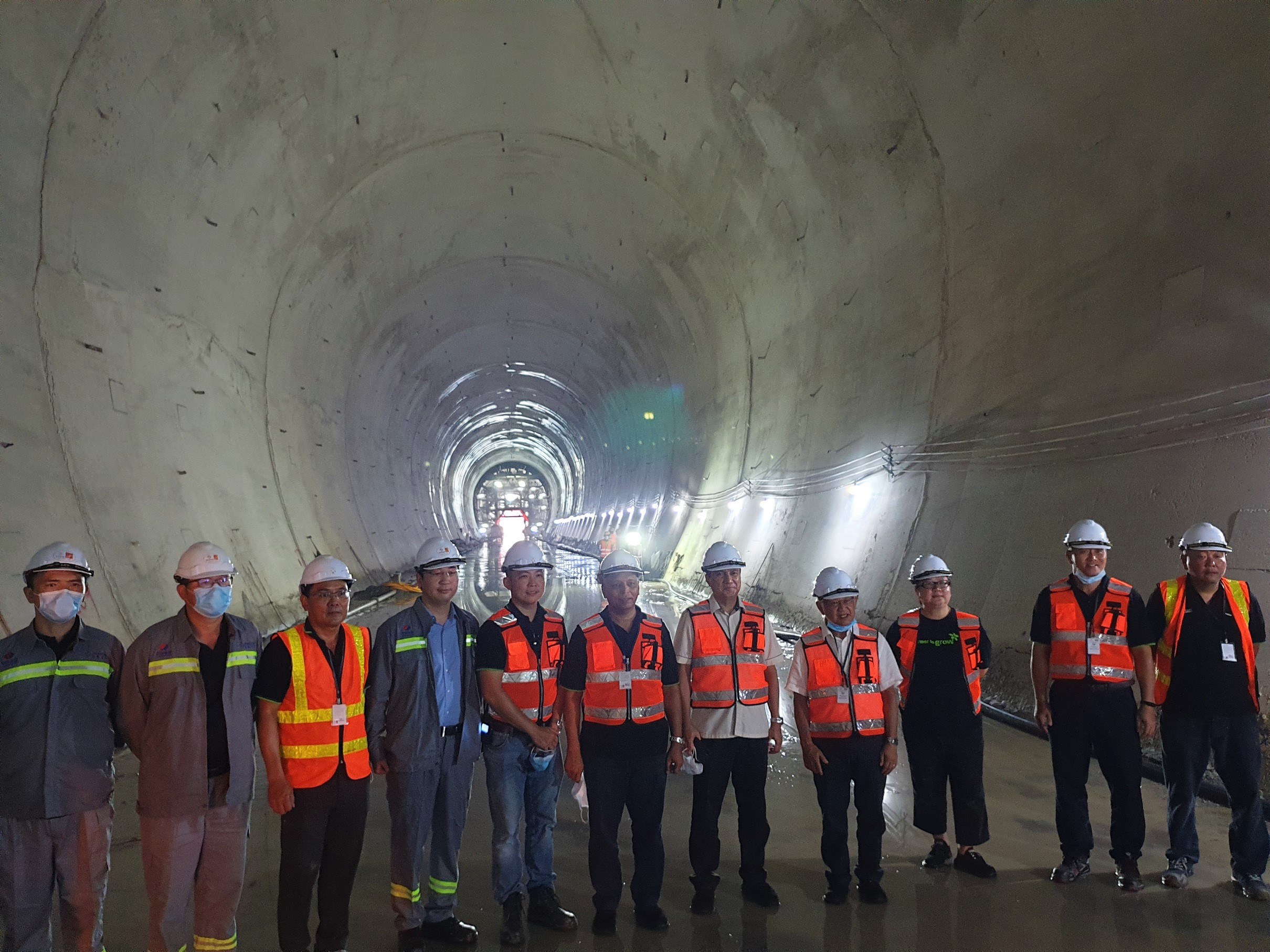

From sixth left; Ir. Pramod, Datu Haji Sharbini and Datuk Amar Abdul Hamed inspecting progress in the diversion tunnel along with the Sarawak Energy team and contractors.
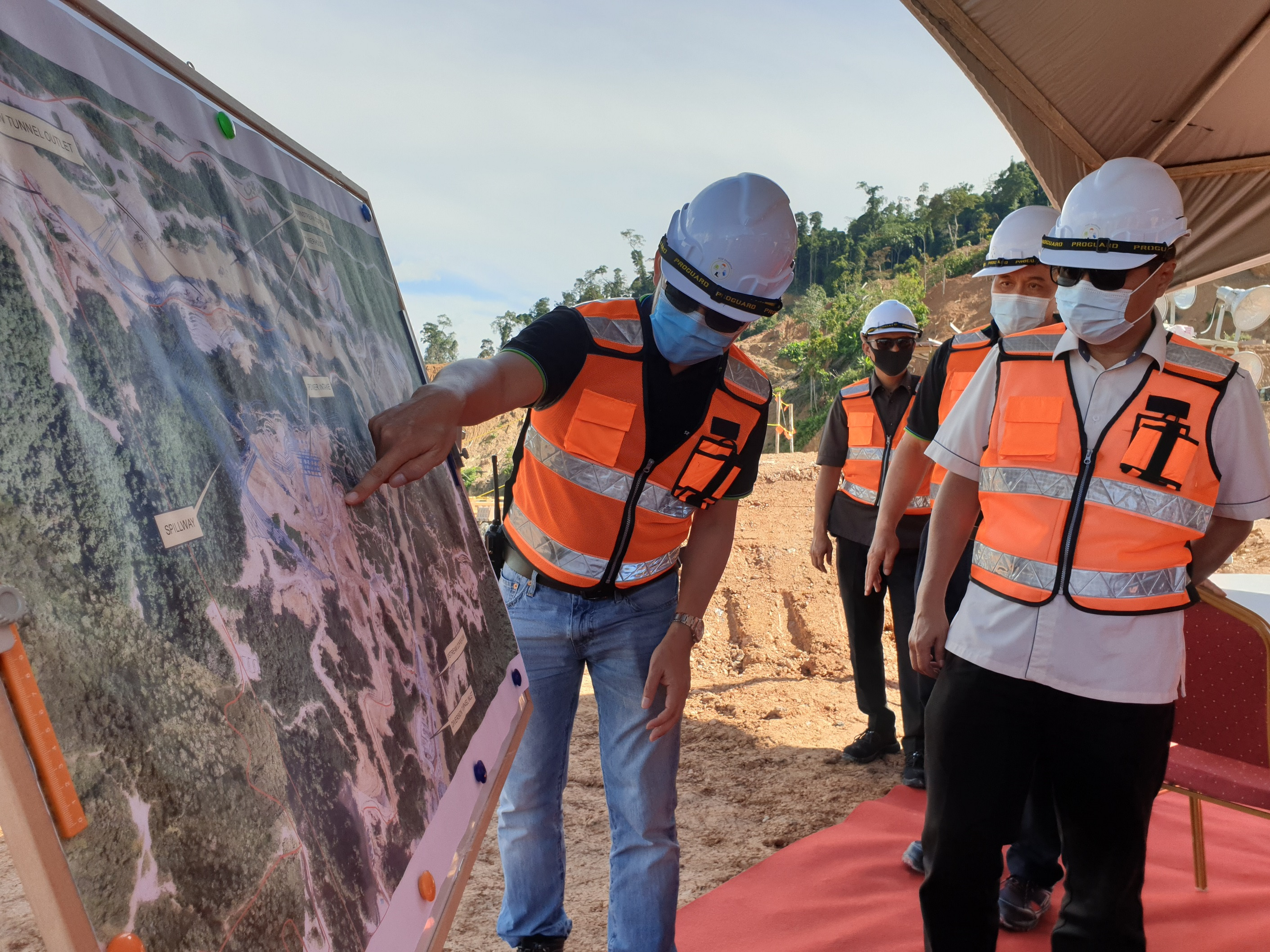

Baleh HEP Project Director Ir. Tan briefing Datu Haji Sharbini at the main dam’s location.
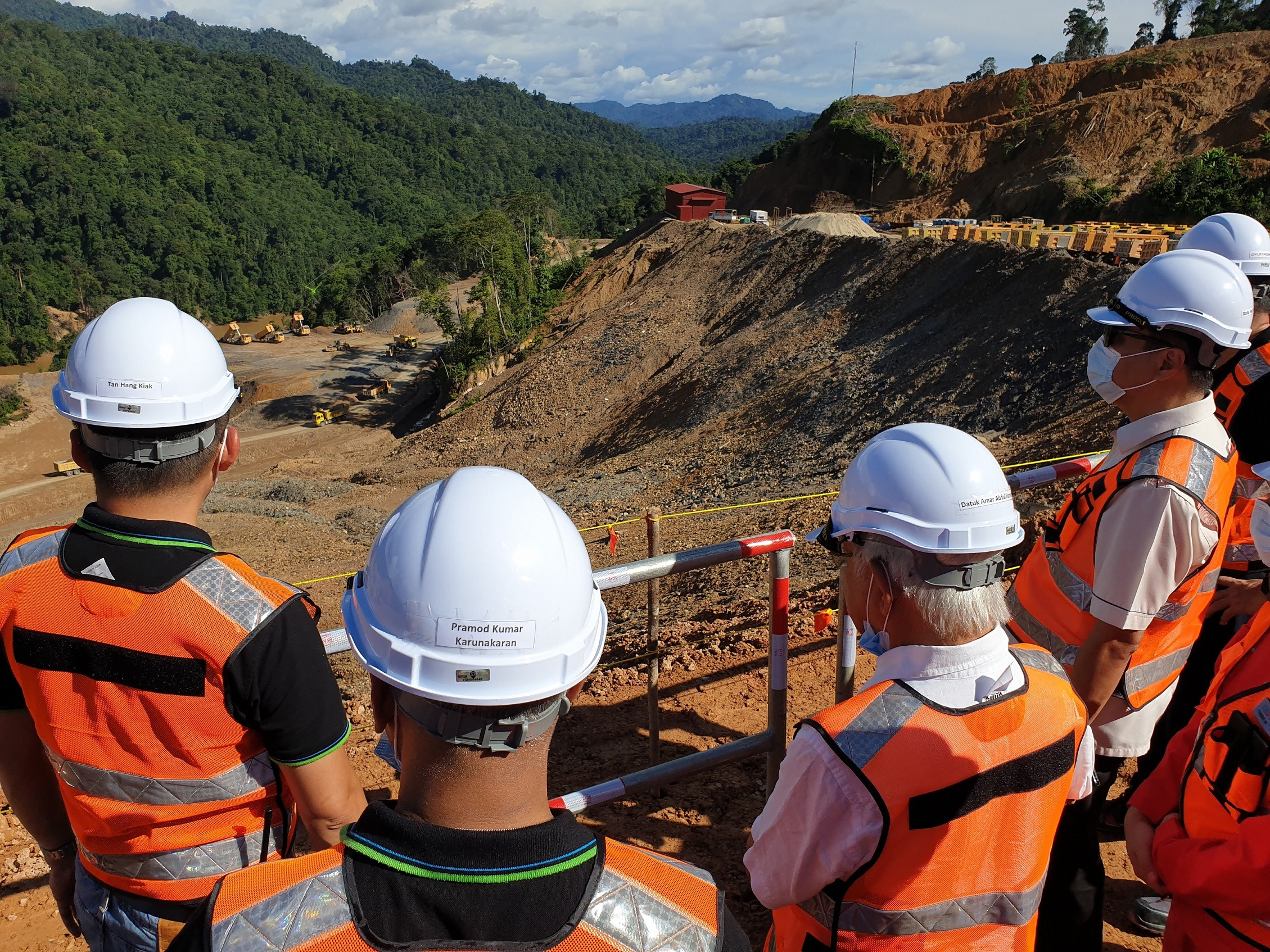

An overview of the main dam’s location.